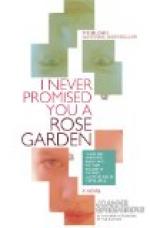The hybrid perpetuals give their great yield in June, followed by a more or less scattering autumn blooming. It is foolish to expect a rose specialized and proven by the tests climatic and otherwise of Holland, England, or France, and pronounced a perpetual bloomer, to live up to its reputation in this country of sudden extremes: unveiled summer heat, that forces the bud open before it has developed quality, causing certain shades of pink and crimson to fade and flatten before the flower is really fit for gathering. Americans in general must be content with the half loaf, as far as garden roses are concerned, for in the cooler parts of the country, where the development of the flower is slower and more satisfactory, the winter lends added dangers.
Good roses—not, however, the perfect flowers of the connoisseur or even of the cottage exhibitions of England—may be had from early June until the first week of July, but the hybrid tea roses that brave the latter part of that month and August are but short lived, even when gathered in the bud. Those known as summer bedders of the Bourbon class, chiefly scentless, of which Appoline is a well-known example, are simply bits of decorative colour without the endearing attributes of roses, and garden colour may be obtained with far less labour.
In July and August you may safely let your eyes wander from the rosary to the beds of summer annuals, the gladioli, Japan lilies, and Dahlias, and depend for fragrance on your bed of sweet odours. But as the nights begin to lengthen, at the end of August, you may prepare for a tea-rose festival, if you have a little forethought and a very little money.
You have, I think, a florist in your neighbourhood who raises roses for the market. This is my method, practised for many years with comforting success. Instead of buying pot-grown tea roses in April or May, that, unless a good price (from twenty-five cents up) is paid for them, will be so small that they can only be called bushes at the season’s end, I go to our florist and buy fifty of the bushes that he has forced during the winter and being considered spent are cast out about June first, in order to fill in the new stock.
All such roses are not discarded each season, but the process is carried on in alternate benches and years, so that there are always some to be obtained. These plants, big, tired-looking, and weak in the branches, I buy for the nominal sum of ten dollars per hundred, five dollars’ worth filling a long border when set out in alternating rows. On taking these home, I thin out the woodiest shoots, or those that interfere, and plant deep in the border, into which nitrate of soda has been dug in the proportion of about two ounces to a plant.




